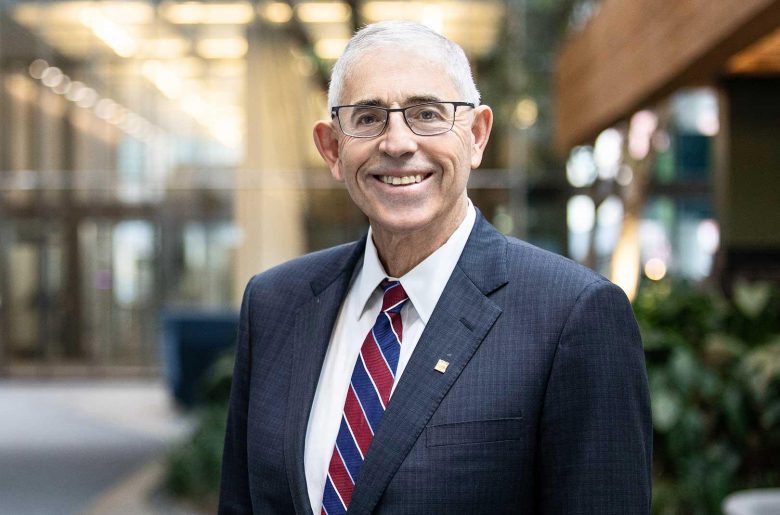
Governance
The Bank of Canada Act provides the legal authority and framework for governance of the Bank of Canada.
Board of Directors
The Bank’s Board of Directors is composed of:
- the Governor
- the Senior Deputy Governor
- a maximum of 12 independent directors
- the Deputy Minister of Finance (who is an ex officio, non-voting member)
Pursuant to the Bank of Canada Act, the Governor is both:
- Chief Executive Officer of the Bank
- Chair of its Board of Directors
As Chair, the Governor leads the Board’s oversight of corporate, financial and administrative matters. Monetary policy is neither formulated nor implemented by the Board. However, directors regularly provide insight on prevailing economic conditions in their respective regions and sectors.
All independent (non-management) directors are appointed for a three-year renewable term by the Minister of Finance with the approval of the Governor in Council. The independent directors elect a lead director for a two-year renewable term. The lead director provides leadership to improve the Board’s effectiveness and acts as a key point of contact with the Governor.1 Claire M. C. Kennedy was reconfirmed as lead director in 2022.
The Bank of Canada Act and the Conflict of Interest Act specify eligibility requirements for members of the Board and outline rules to prevent conflicts of interest.
The Board also requires its independent directors to follow the Code of Business Conduct and Ethics for Directors.
As a result of resignations in 2021 and 2022, the Bank had three vacant positions on its Board of Directors. These have since been filled: in early 2023, Deputy Prime Minister and Minister of Finance Chrystia Freeland announced the appointments of David Dominy, Ernie Daniels and Shelley Williams to the Bank’s Board of Directors.2
See the 2022 Board of Directors
Committee structure and meetings
The Board of Directors has five standing committees, each of which has terms of reference and an annual work plan to guide its activities. The Bank of Canada Act also provides for an Executive Committee that is accountable to the Board and that can act in place of the Board. Each standing committee of the Board, except the Pension Committee, consists solely of independent directors.
Bank of Canada management
Governor and Senior Deputy Governor
The independent members of the Board of Directors appoint the Governor and Senior Deputy Governor for a seven-year term, with the approval of the Governor in Council. The length of this term allows the Governor and Senior Deputy Governor to adopt a long-term perspective. This is essential to the Bank’s effectiveness in:
- conducting monetary policy
- performing its other core functions
The salaries of the Governor and Senior Deputy Governor are determined by the Board within ranges established by the Government of Canada’s Advisory Committee on Senior Level Retention and Compensation. They are subject to approval by the Governor in Council.
Governing Council
Pursuant to the Bank of Canada Act, the Governor:
- has specific authority and responsibility for the business of the Bank
- oversees the Bank’s core functions with assistance from the Senior Deputy Governor and the Deputy Governors
The Governor, Senior Deputy Governor and Deputy Governors constitute the Bank’s Governing Council.
Two internal committees are in place to provide advice:
- The Monetary Policy Review Committee assesses economic conditions in Canada and provides advice to Governing Council on monetary policy.
- The Financial System Review Committee is the main forum for presenting and discussing issues related to the financial system.
Two Deputy Governors retired from the Bank in 2022: Lawrence Schembri (June) and Timothy Lane (September). A special committee of the Board of Directors was formed to lead the recruitment process for an external, non-executive Deputy Governor who will focus on contributing to the Bank’s monetary policy and financial stability mandates. In early 2023, Nicolas Vincent was appointed to this role for a term of two years, effective March 13, 2023.3
Bank of Canada management structure
Executive Council—composed of Governing Council, the Chief Operating Officer (COO) and the Executive Director, Supervision—is responsible for helping the Governor oversee the Bank’s strategic direction.
As members of Executive Council:
- the COO oversees strategic and operational planning, administration and operations
- the Executive Director, Supervision, is responsible for the supervision of retail payment service providers and the oversight of financial market infrastructures
The Leadership Forum—composed of Executive Council, advisors and the managing directors of each department—focuses on:
- strategic Bank issues
- nurturing a leadership culture
The Senior Management Council is composed of both standing and rotating committee members from the Bank’s Leadership Forum. It supports the work of Executive Council by overseeing:
- operational issues
- corporate programs
- strategic initiatives
- financial reporting
- annual planning
- risk management
Compliance and ethics
The Bank requires all employees to observe the highest standards of professional ethics. To this end, the Bank’s comprehensive Code of Business Conduct and Ethics is in place to address the personal and professional conduct of Bank employees. The policy on disclosure of wrongdoing provides information to employees on how to report wrongdoing and outlines management’s role in disclosures, investigations and reporting.
The Board reviews the Code of Business Conduct and Ethics annually.
More information
Code of Business Conduct and Ethics
- 1. See Bank of Canada, “Lead Director: Terms of Reference” (December 2022) for more information.[←]
- 2. The selection process for these appointments took place primarily in 2022; the announcement was made on January 12, 2023.[←]
- 3. The selection process for this appointment took place primarily in 2022; the announcement was made on January 16, 2023.[←]


